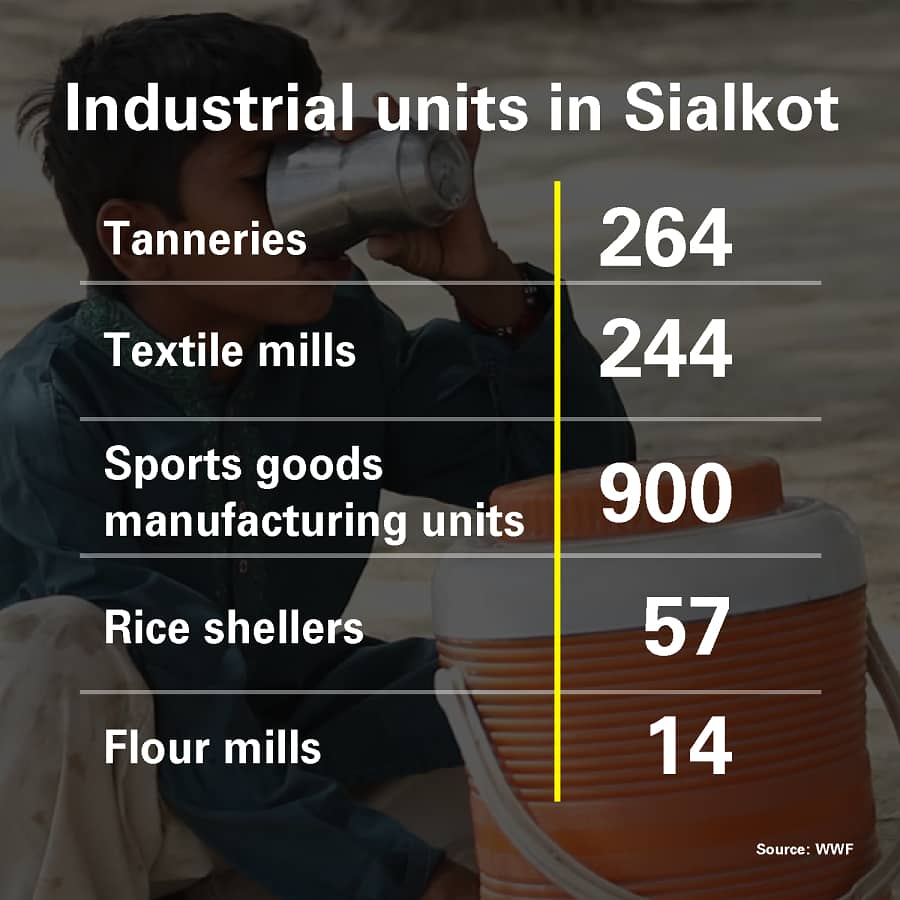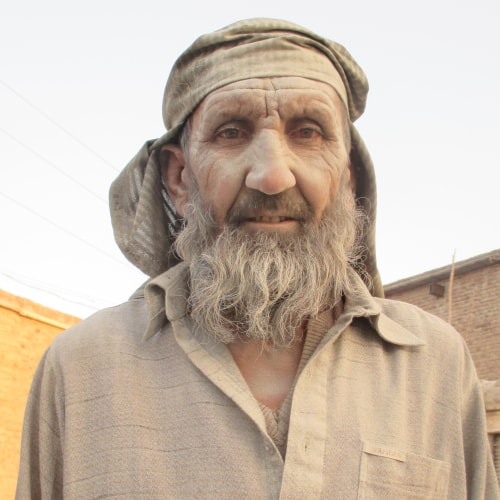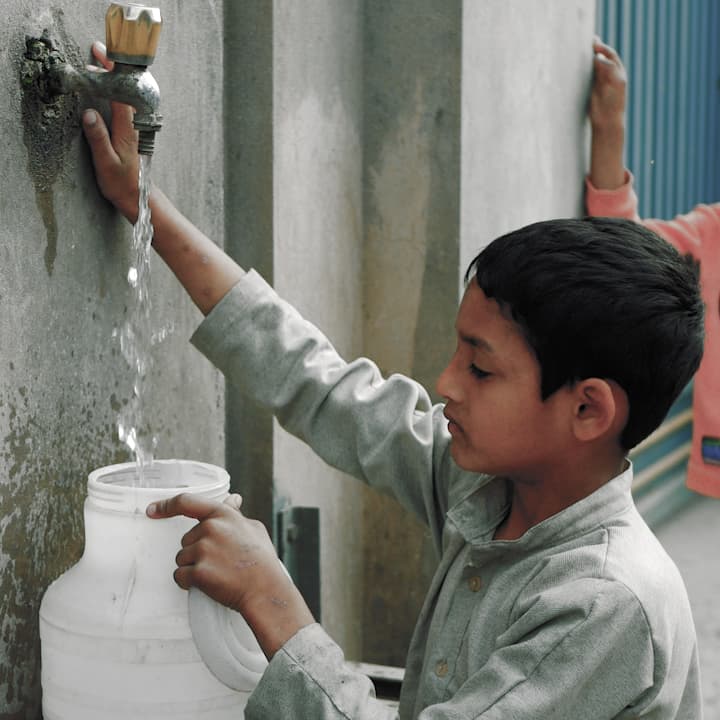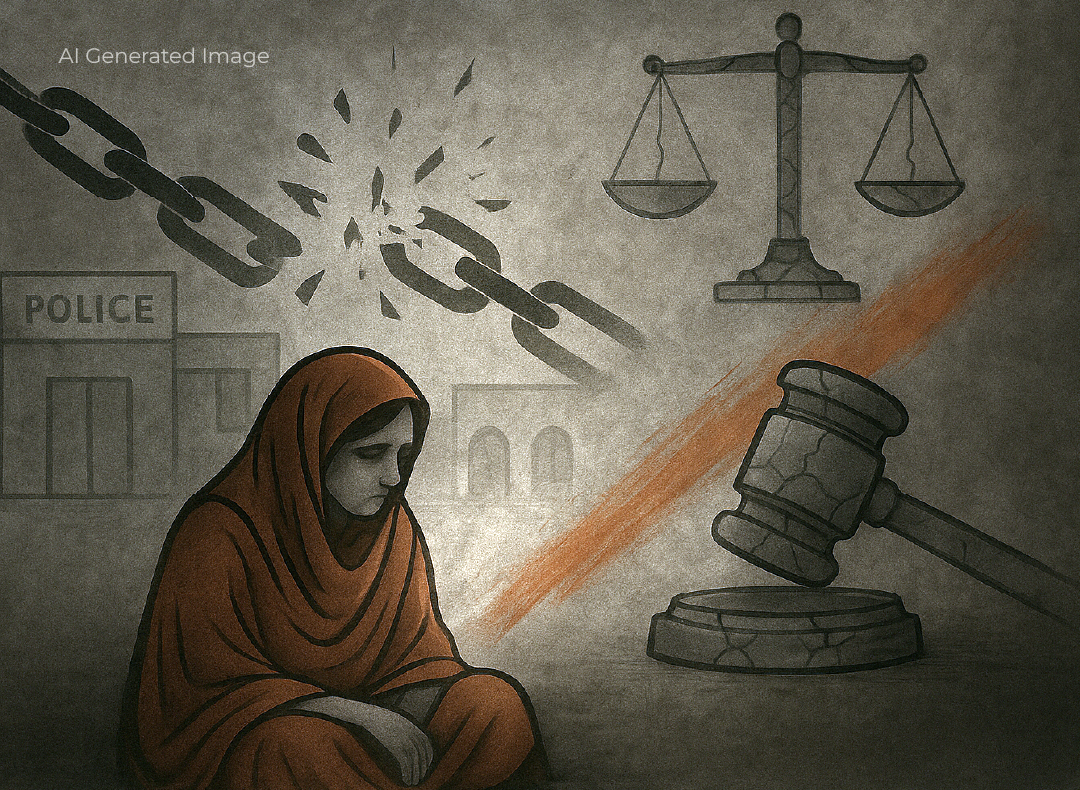Sajid Shehzad has bloodshot eyes.
These were not always like this. Their color gradually changed a few years ago after he suffered from jaundice, fever and cholera.
Shehzad, 40, runs a grocery store in a village, Sodhra, located four kilometres east of central Punjab’s Wazirabad city. The population of this village is about five thousand but each of its household has one or two people who, just like Shahzad, are suffering from various diseases.
Local residents allege that the main cause of these diseases is the poor quality of drinking water available in the village.
To solve this problem, several resourceful people of Sodhra have installed clean water taps outside their homes. Local children can be seen riding bicycles around these taps all day. They collect water from these taps and take it home on their bicycles. A big part of Shehzad's day is also spent filling water from these taps.
The root cause of the defects found in drinking water in Sodhra is at a place called Lado Puli, located 1.5 kilometres from the village.
The puli or bridge is located on a road that links Wazirabad with Sialkot. It marks the convergence of three rain drains but the water flowing under it is a dark grey poisonous liquid. The fields on both sides of the path that leads to Sodhra are irrigated with this same fluid.
Shehzad alleges that a factory called Forward Gear, which makes sports equipment and bags, is responsible for the contamination of water in these drains. The factory is located near the town of Sambrial, 29 kilometres east of his village.
His allegation is not entirely baseless.

Shehzad’s friend Aun Gurmani has been researching the causes and harmful effects of environmental pollution for the last few years.
According to him, the said factory “makes 3.1 million bags as well as other sports goods every year. It uses polyester, nylon and fibre in its products.” During the production process, Gurmani says the residues of these materials turn into small particles that are dumped through cement gutters into a rainwater drain called Bhaid which runs in front of the factory gate.
Gurmani and Shehzad have also filed a petition against the factory at Lahore’s environmental tribunal. Testifying in this court on 26th January 2021, Shehzad said, “Many people in my village, including myself, are suffering from typhoid, jaundice and cancer due to the dumping of polluted water in the rain drain by Forward Gear.”
He further told the court that he had informed the factory on 9th January 2021 that its polluted water was causing diseases in the area. But instead of rectifying the problem, he alleged, the top officials of the factory threatened him and told him that “he should refrain from taking any action against the factory”.
Bhaid drain originates from a mountain range in Jammu and flows along Wazirabad-Sialkot highway. Before reaching Sambrial, it splits into two parts. One of these flows along the road to Wazirabad and the other part, after passing under a canal, runs along Sambrial’s populated area and then passes through several villages in the west. It finally reaches Lado Pulli and merges with the first part.
Azam Chaudhry, a resident of Sambrial, believes that not only Forward Gear but also many other leather and textile factories have been dumping their dirty water into the drain for the last several years. This has caused “widespread water contamination in Sambrial and the villages surrounding it”.
A 50-year-old construction contractor, Chaudhry is having sand loaded into a trolley with the help of labourers by the bank of a canal. He has a strong physique but has been suffering from chronic respiratory diseases, coughs and fevers for a long time. Even while the sand is being loaded, he often tries to regain his breath by leaning against a tree.
Muhammad Farooq, a resident of a nearby village, Randhir Mor, also has similar complaints about water contamination. “Ten years ago, we would get clean water by digging 40 feet below the ground but now we have to dig 500 feet to get water that can be used for drinking and irrigating purpose,” he says.

Dr Muhammad Yousuf, who runs a private clinic in Sodhra, echoes this complaint. He says his village’s “groundwater has become fully polluted due to which typhoid, cholera, jaundice and other gastrointestinal diseases are on the rise here.”
He further explains: “If I examine 20 patients a day, at least five of them are suffering from various diseases caused by the consumption of contaminated water.” Most of the victims of these diseases, according to him, are children and the elderly.
The government plans
The World Wide Fund for Nature (WWF) compiled a detailed report in 2019 on water pollution in and around Sialkot. According to this report, there are 264 tanneries, 244 textile factories, 900 sports equipment factories, 57 rice threshing mills and 14 flour mills in the area.
They all dump their highly polluted residues into three rainwater drains called Palkhu, Bhaid and Aik which flow into the Chenab river after passing through the rural outskirts of Sialkot, Sambrial and Wazirabad.
The report states that large quantities of human and industrial waste dumped in these drains are seriously polluting the area’s groundwater. In many places, the polluted water is also leaking out of drains, causing direct damage to nearby settlements and crops.
The authors of the report warn that the villages between Sambrial and Wazirabad will become a hotbed of infectious diseases if the problem of water pollution in the area is not addressed urgently.
Imtiaz Ahmed, who recently served as deputy director of the environment department in Sialkot, acknowledges that water and environmental pollution in the area has turned into a serious medical and environmental crisis. But he claims that his department is doing everything possible to overcome the crisis. For instance, he says, two leather factories were issued notices to clean up their act as far back as 2010. After multiple hearings at an environmental tribunal in Lahore, however, no further action has been taken against them.
He also says that the government has launched two major projects in Sialkot and its environs to tackle water pollution. The first of these is called the Sialkot Tannery Zone. It aims to relocate leather factories situated in and around Sialkot city to a place away from the population. “The total cost of the project is 3.96 billion rupees and it is being constructed under collaboration between the environment department and the Sialkot Tannery Association,” he says.
Also Read

Death by work: how stone grinding factories in Punjab are causing an incurable disease
According to the relevant government documents, the project is scheduled to be completed next year, in 2022, but in practice so far only land has been acquired for it. Electric power, water and roads required for it are yet to be made available.
The second project consists of a water treatment system and a modern sewerage network. The main component of this project will be set up on 230 acres of land north of Sialkot city and will be completed in 2029.
The work on the project, however, has not yet begun. In fact, most of the land to be required for it is still being used for agricultural purposes.
Even if this project is completed, the problem of water pollution in Sodhra and its adjoining villages will probably be exacerbated instead of being solved. This is because it will release more urban sewage water into the three rain drains —palkhu, Bhaid and Aik— which have already polluted the local groundwater.
That is why residents of the area have no illusions about the success of the project. According to Muhammad Waseem, a resident of Kotli Mughlaan, a village close to Sambrial, “even under the new project, contaminated water would be discharged through the drains. This will cause more misery and disease for the local population.”
This report was first published by Lok Sujag on 5 Mar 2021, on its old website.
Published on 30 May 2022




















